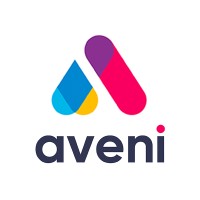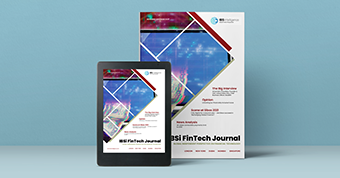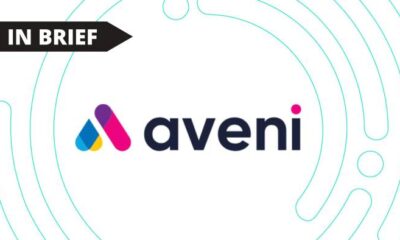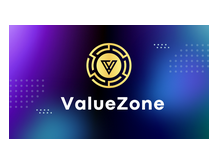Fintech
OMNIQ reports revenue growth and fintech expansion By Investing.com

OMNIQ Corp (OTC:) has announced a positive start to the year in their First Quarter 2024 Earnings Conference Call, revealing a 14% increase in revenue, a record gross margin of 28%, and reduced operating expenses. The company highlighted the expansion of their AI machine vision technology with significant projects, including airport upgrades and homeland security initiatives. OMNIQ’s focus on the fintech market was emphasized, with new contracts and the acquisition of CodeBlocks Limited, signaling further growth in this sector.
Key Takeaways
- OMNIQ Corp reported a 14% increase in revenue and a record high gross margin of 28%.
- They have reduced operating expenses and are focusing on profitability and cost-cutting measures.
- Significant contracts in the IoT and mobile computing business were secured, including a $5 million purchase order from a US food and drug chain.
- OMNIQ is expanding its fintech offerings, having deployed self-service kiosks for Israel’s largest energy company and secured contracts with major US restaurant chains.
- The company introduced a new SaaS product, see Q, for remote system management.
- They have submitted an application to list their common stock on the OTCQX and QB marketplace.
- OMNIQ sees the fintech market as a key growth engine, leveraging trends in digital transformation and AI integration.
Company Outlook
- OMNIQ is focused on expanding its fintech offerings to existing and new customers, riding the wave of digital transformation.
- The company is working on a $50 million project with a leading food and chain customer, with successful pilots leading to initial orders.
Bearish Highlights
- The company did not discuss any specific challenges faced during the quarter.
3rd party Ad. Not an offer or recommendation by Investing.com. See disclosure here or
remove ads
.
Bullish Highlights
- OMNIQ’s AI machine vision technology is being deployed in high-profile projects, including the Prime Minister’s residence and a new homeland security project.
- The acquisition of CodeBlocks Limited is expected to bolster OMNIQ’s fintech software development capabilities.
Misses
- There were no specific financial misses reported in the earnings call.
Q&A Highlights
- The company expressed gratitude for the support and is optimistic about its future success.
- OMNIQ emphasized its investment in cloud management to rapidly deploy systems and increase computing power.
OMNIQ Corp’s first-quarter performance shows a company on the rise, with a strategic focus on the fintech market and AI technology integration. Their expansion into new industries and the deployment of innovative products like see Q, along with the pursuit of listing on the OTCQX and QB marketplace, demonstrate a forward-looking approach. With cost-cutting measures in place and a strong emphasis on profitability, OMNIQ is poised to continue its growth trajectory in the evolving digital landscape.
InvestingPro Insights
OMNIQ Corp (OMQS) has shown a dynamic start to the year with promising developments in revenue and gross margin as reported in their First Quarter 2024 Earnings Conference Call. However, an InvestingPro analysis reveals some challenges and opportunities that investors should consider:
InvestingPro Data shows a Market Cap of 3.37M USD, which indicates a relatively small size in the market, potentially offering higher growth opportunities but also higher risk. The company’s Gross Profit Margin for the last twelve months as of Q4 2023 stands at 19.35%, which, while not indicative of the record high gross margin reported in Q1 2024, suggests that the company has room for improvement in this area. Additionally, OMNIQ has experienced a significant Return on Assets of -56.44% for the same period, highlighting inefficiencies in utilizing its asset base to generate profit.
3rd party Ad. Not an offer or recommendation by Investing.com. See disclosure here or
remove ads
.
An InvestingPro Tip that stands out is OMNIQ’s “significant return over the last week,” with a 22.69% price total return, which may catch the attention of investors looking for short-term gains. However, investors should also note that the stock has “suffered from weak gross profit margins” in the past, which aligns with the Gross Profit Margin data and could be a point of concern for long-term profitability.
For a more comprehensive analysis and additional InvestingPro Tips, investors can visit https://www.investing.com/pro/OMQS. There are over 13 additional tips available, which can provide deeper insights into OMNIQ’s financial health and market position. To access these insights, use the coupon code PRONEWS24 to get an additional 10% off a yearly or biyearly Pro and Pro+ subscription.
Full transcript – Amerigo Energy Inc (OMQS) Q1 2024:
Operator: Hello and welcome to the OMNIQ Corp’s First Quarter 2024 Earnings Conference Call. My name is Ali and I will be coordinating your call. With us on the call are Mr. Shai Lustgarten, Chief Executive Officer and Acting Chief Financial Officer. Today’s call is being recorded and you should have access to the company’s first quarter 2024 earnings press release issued after the market closed yesterday. This information is available on the Investor Relations section of OMNIQ’s website at www.omniq.com. During the course of this conference call, we will make certain forward-looking statements. All statements that address expectations, opinions or predictions about the future are forward-looking statements. Although they reflect our current expectations and are based on our best view of the industry and our current expectations and our business as we see them today, they are not guarantees of future performance. These statements involve a number of risks and uncertainties, and since these elements can change, and in certain cases are not within our control, we would ask that you consider that and interpret them in that light. We urge you to review the company’s Forms 8-K, 10-Q and other SEC filings for a discussion of the principal risks and uncertainties that affect the company’s business and performance and the factors that could cause actual results to differ materially. OMNIQ undertakes no obligation to publicly update or revise any forward-looking statements, whether as a result of new information, future events or otherwise, unless required by law. Following the prepared remarks, the company will be taking questions as time permits. Now I will turn the call over to Shai Lustgarten, CEO. Mr. Lustgarten, please go ahead.
3rd party Ad. Not an offer or recommendation by Investing.com. See disclosure here or
remove ads
.
Shai Lustgarten: Thank you so much, operator. Good morning, and thank you for joining us today. On behalf of the entire team at OMNIQ, I extend a warm welcome to all our investors, analysts and guests. We appreciate the time you’ve taken to be with us, as we discuss our recent performance, the progress of our strategic initiatives and our vision for the future. Your continued support and interest in OMNIQ are invaluable to us as we strive to enhance shareholder value and achieve new milestones together. We look forward to sharing our updates and insights with you today. First, I’ll discuss some key developments over the first quarter. We’re excited to announce the continued enhancement of our AI machine vision business with the upgrade of DFW Airport, which is using our technology for access control and also a new homeland security project integrating our advanced AI machine vision solutions for public safety in a highly sensitive area. The next development in this area is enhancing our capabilities to win new areas of business from existing customers and also enhance our suite of capabilities to attract new customers. We did this by developing our new SaaS product, we call see Q. We developed this to remotely manage the operation, performance and health of our systems deployed in the field. We intend to continue to develop this product so that it can be hardware agnostic. Essentially, consumers or customers will have one place to track and manage all their devices and receive analytics on the device performance and functionality. Now, let’s move to fintech. In the first quarter, OMNIQ’s self-service consumer management kiosks were successfully deployed by Israel’s largest energy company. Additionally, we have secured a contract with two major U.S.-based restaurant chains to implement our self-ordering platform along with a new fintech solution deployed at the Ben Gurion Airport, enhancing traveler experience with self-ordering convenience, further expanding our footprint in the global markets. We are also happy to announce the acquisition of CodeBlocks Limited, a leader in fintech software development, marking a significant milestone in our expansion strategy into the fintech sector. Now, we’ll discuss our IoT and mobile computing business. We have won significant contracts in this area. Some recent notable business was the $5 million in a purchase order from one of the largest U.S. food and drug chains, a contract to supply the Nestle International Logistics Center and a device upgrade in 450 sporting goods stores for a major U.S. retailer. These purchase orders help us to drive our business forward and reinforce our market leadership. Next, I have few updates to share with you. First, we have submitted an application to list the trading of our common stock to the OTCQX and QB marketplace. The listing of the company’s common shares on OTCQX remain subject to the approval as of now. OTCQX is top tier of three markets organized by OTC Markets Group Incorporated, for trading over-the-counter securities and is designed to establish investor-focused U.S. and international companies. We view the current situation as a temporary phase in our ongoing strategy, focused on profitability and operational efficiency. We are actively executing our strategic plan and exploring every avenue to ensure swift return to a national exchange listing. In the interim, OMNIQ will continue trading on the OTC market and we have taken steps to be listed on the OTCQX, the premier tier of the OTC markets, reflecting our commitment to high standards and transparency. Please be assured that OMNIQ remains diligent in fulfilling the all SEC requirements and filings. Our commitment is unwavering as evidenced by our consistent acquisition of new customers and the expansion of our business with existing Fortune 100 customers. We are confident in the strength of our partnerships and our proven business model, which we believe will drive our return to profitability and sustain our long-term success. Next, we will discuss our strategic plan for operational efficiency. Our management team is deeply committed to enhancing operational efficiency. We have implemented strategic measures aimed at reducing costs and increasing revenues. These initiatives are designed to streamline our operations and optimize our resource allocation, setting a robust path towards sustained profitability. This includes measures such as concentrating our sales efforts toward higher profit products, reducing operational costs without reducing operational efficiency, expanding product lines in large growing markets, utilizing existing partnerships and coming out with products that add value to those customers on subscription basis and more. This plan is showing results when looking at the Q1 results, financial results numbers, and we’re expecting to see further improvements in Q2 and beyond until we regain profitability. Now we’ll talk about fintech. The fintech market is experiencing rapid growth, driven by increasing demand for technology-driven financial solutions. This expansion presents significant opportunities for OMNIQ, as our innovative solutions are well aligned with the current market needs and we believe that, we are in a good position to provide these solutions to both new and existing customers. Across the industries we operate in, trends such as digital transformation, AI integration and automated solutions are influencing market dynamics, where we are actively leveraging these trends to enhance our product offerings and add value to our customers, so that we can stay ahead in the competitive markets. OMNIQ continues to distinguish itself from competitors through advanced technology solutions and strategic partnerships. We believe that, our focus on customer-centric innovation and operational excellence positions us strongly against competitors in all our markets. Next, let’s talk about financials. In the first quarter of 2024, we experienced strong financial improvements. Revenues rose by 14% from the previous quarter, reaching $18.3 million. Our gross margin hit a record high of 28%, up significantly from 21% in the same quarter last year, and up 13% from the last quarter of 2023. Gross profit soared by 142%, reaching $5 million. We also successfully reduced our expenses with SG&A expenses decreasing by 18%, leading to an overall 18% reduction in total operating expenses, compared to the first quarter of last year. Our operating loss decreased by 37% from $2 million in the first quarter of 2023 to $1.3 million in 2024. Similarly, our net loss saw a drastic reduction of 40%. Additionally, the basic loss per share from continuing operations improved to $0.20 from $0.45 loss per share in the same period last year. The total comprehensive loss for the quarter was $1.9 million, a reduction of 39%. The remaining loss was partly due to the effects from foreign currency exchange. These financial achievements reflect our effective cost management strategy. These efforts not only demonstrate our commitment to operational excellence, but also reflect our focus on enhancing shareholder value, which has shown 37% reduction in operational losses year-over-year. This quarter, OMNIQ has made significant strides towards financial stability. We’ve successfully streamlined operations and managed costs effectively leading to a noticeable decrease in losses. Our focused efforts are not only improving our bottom-line, but also driving sales. This progress is a clear indicator of our commitment to operational excellence and value creation for our shareholders. Operator, now I’ll turn the time back for Q&A.
3rd party Ad. Not an offer or recommendation by Investing.com. See disclosure here or
remove ads
.
Operator: Thank you. [Operator Instructions]. Your first question for today is from Moran Pober with Acquisitions.com.
Moran Pober: Hello. Can you hear me?
Shai Lustgarten: Yes, we can hear you.
Moran Pober: Thank you, Shai. Good job on the improved results. I have three questions, please. First one is, what is the plan for the next quarters? Like, will it continue with the cost cut, so how OMNIQ achieves profitability? My second question is, can you please explain the higher gross margin. Is it the product mix? Is it expected to continue at this level? What do you think? And my third question, please, is can you please tell us more about the Fintech business segment? Like, do you see it as an important growth engine or how do you see it? Thank you.
Shai Lustgarten: Thank you, Moran. Appreciate the questions. Regarding the first question, our plan for the next quarter, not only for the next quarter, but the additional quarters this year and, of course, going forward is very simple. We are focused on profitability. We have reached nice revenues. We have very clear visibility towards our revenue growth this year, and thus, that gives us the ability to continue our focus on profitability and continue our cost cuts. We’ve already very quickly, as we demonstrated, shown the fruits of these efforts. It’s a very simple and not simple to execute, of course, but as a $100 million company becoming profitable in a year, that’s something that is, I think, going to be noticed by our shareholders. Of course, that’s the best thing for the company and that’s our simple strategy, continued growth and continue getting profitability. Regarding the second question on the higher margins, it is mainly due to two factors. One, yes, we have introduced to the market our AI machine vision products and continue to develop these products and continue to increase our footprint in the different markets that we serve. This allows us to grow that revenue pie of the machine vision product, AI product, to grow that revenue pie, revenue portion in the total pie, and that, of course, comes with higher margins. The other factor is the cost cuts. We’re working per our plan on cutting the cost of goods sold. And thus, this allows us to continue increasing our margins. Again, all of this is part of our plan that we’ve discussed in many calls before, and we said that, 2024 is going to be that year and that is exactly what we’re experiencing now. Regarding the fintech, fintech is a market that is significantly growing year-over-year. It’s a market that we already provide solutions that we call point-of-sale solutions that go to retailers, that go to other customers in the different markets we serve. We already today are providing our solutions, total solutions, total systems to Fortune 500, Fortune 100 customers. We decided to invest into the Fintech software and hardware as a complete system because it is part of the many products we already serve our existing Fortune 500, Fortune 100 customers. Today, we already manage approximately 30,000 businesses and their financial transactions. That is a very nice footprint and one that we see as a growth engine, of course, aimed on our existing customers we already serve, which by our total solutions and that is how we see the Fintech going to grow to continue exposing it and selling it to our existing customers and, of course, bringing in new customers as well. The one last thing about Fintech, it allows us, as our vision supports, of course, the data-driven markets we are providing today, IoT systems, AI products to our consumers, which these products are, if you will, you can imagine it as sensors that pick-up data. Same thing with Fintech. This is another very solid path in letting us get even better data, much more precise, I would say, that allows us to identify trends and thus bring us to the next-gen products of OMNIQ. I hope that answers the questions.
3rd party Ad. Not an offer or recommendation by Investing.com. See disclosure here or
remove ads
.
Operator: Your next question for today is from Pavlina Siliciottu [ph]. Your line is live.
Unidentified Analyst: Hello, Shai. A few months ago, the company announced…
Shai Lustgarten: Pavlina, how are you?
Unidentified Analyst: I’m fine. Thank you. How are you? I have two questions for you. The first one is a few months ago, the company announced that, it has been selected for a project of approximately $50 million. Can you update us on the project? And does the revenue already announced include the execution of part of the project?
Shai Lustgarten: Can you repeat the second question?
Unidentified Analyst: Would you like to answer this one first? The first question actually, two parts. Does the revenue already announced include the execution of part of the project?
Shai Lustgarten: Okay. We’ve been awarded with the project. We can call it a project, but these are already items, products, IoT products we have been providing to the customer, a leading food and chain customer, Fortune 100 company. We’ve been providing them this equipment already in the past and now they have selected us. Last year, they have selected us to really expand it across the board, our footprint over there. It involved a lot of pilots, not because, like you mentioned, these are products we already provided, but expand such across the board to all their operations, all their warehouses, distribution centers, stores, et cetera, that is a larger scale project and that came with pilots that we conducted and ended successfully. We are currently at the space of sending the first orders to come in. That same customer have already provided us purchase orders, not from this specific project budget, but actually from other budgets and smaller ones, which use the same product. That was an amazing sign for us, because that shows us that, they are trusting our product that we passed all pilots and even further increased our potential business with them, because the purchase orders we currently receive for the same product from the same customer are ones that are not even from the budget of the $50 million one. We are seeing very positive feedback. We are already providing the customer with this technology and we are expecting the first orders from this specific $50 million budget to come every day now.
3rd party Ad. Not an offer or recommendation by Investing.com. See disclosure here or
remove ads
.
Unidentified Analyst: Understood. Thank you. The second question is, there were a few announcements regarding new AI unique features like in car, face recognition, crowd management and here I’m referring to the Israeli train company project announced in September ’23, HOV and others. Can you please update us on these issues?
Shai Lustgarten: Certainly. Yes, we have done a lot of work, R&D work. One of our biggest expenses are the R&D, to research and development. One of the infrastructures that we invested in is to manage our solutions over the cloud, to complete cloud management for our clients, for our customers. This allows us to more rapidly expand and deploy systems. We have more than 10,000 deployments now only in the U.S., 10,000 lanes, 10,000 AI systems working. Being on the cloud to do that, having that infrastructure, and that is done. We’ve been also able through that to increase our computing power with the AI product. This allows us to really use virtual servers much stronger and allow us to do things like the machine vision identification of objects, weaker, much faster, of course, but also with much higher accuracy because of the computing power that we use over the cloud with virtual servers. One of these outcomes from these infrastructure is the ability to work on different projects, expand or reach to additional industries such as the train market, where we provided signed and already concluded pilot where we are providing system product, AI product that allows to identify crowd and the number of people that can — the computer, what we do is we provide we look at the platform of where the trains come in and/or go out from and there we can identify risks. One of the biggest risks this customer specifically wanted us to identify is crowd, people that increase and create kind of a risky crowd situation where it could end up in an accident where we are, when that happens, before that happened, before this we can identify the risks this way on every platform that we are deployed at, we can identify the crowds, increasing numbers of people there and we can then alert the authorities or the customer, anyone that he wants us to alert. We can alert them before this risk becomes an event. That’s a life-threatening situation, where we are doing lifesaving. We are creating lifesaving situation out of it due to the notifications and alerts that we provide. That’s regarding that specific project. Of course, this is a product that is relevant for many other customers. The fact we did it with this specific customer, which is National Train Company that allows us to really have a great reference going out to the whole market. The other what you mentioned, the HOV, what we do, we train our engine, we call the algorithms, the patented algorithms that we have, we call it the engine. We trained our engine to identify the number of passengers in the vehicle that immediately caused interest from two specific industries. The first is the military one, the defense one and the second is, of course, the commercial one. In the defense one, we already are deploying this product, this AI product in Prime Minister’s residence and that was a very that was a significant milestone we achieved and other ministers in different governments to identify also not only the vehicles but also identify the people that are in the vehicle. On the commercial side, we are currently conducting pilots with one of the largest, I would say, integrator in the U.S. To actually then go after the commercial market, the HOV lanes and be able to enforce HOV regulations, which are not today enforceable, but with our product are. Again, it’s a huge growth engine and something that we’re focusing on as well.
3rd party Ad. Not an offer or recommendation by Investing.com. See disclosure here or
remove ads
.
Operator: [Operator Instructions]. We have reached the end of the question-and-answer session. And I will now turn the call over to Shai for closing remarks.
Shai Lustgarten: Thank you, operator. Thank you all for your participation today. As we close this call, I want to express my deep gratitude for your ongoing interest and belief in OMNIQ. Your support fuels our commitment to innovation and excellence. We are excited about the road ahead and look forward to continuing this journey with you. Together, we are driving OMNIQ towards a brighter, more profitable future. Thank you once again for joining us today. We thank also our team, the employees of OMNIQ and the amazing achievements that we are achieving daily. We appreciate your trust and partnerships as we move forward into an exciting era of achievement. Have a wonderful day. Thank you so much.
Operator: This concludes today’s conference and you may disconnect your lines at this time. Thank you for your participation.
This article was generated with the support of AI and reviewed by an editor. For more information see our T&C.
Fintech
US Agencies Request Information on Bank-Fintech Dealings

Federal banking regulators have issued a statement reminding banks of the potential risks associated with third-party arrangements to provide bank deposit products and services.
The agencies support responsible innovation and banks that engage in these arrangements in a safe and fair manner and in compliance with applicable law. While these arrangements may offer benefits, supervisory experience has identified a number of safety and soundness, compliance, and consumer concerns with the management of these arrangements. The statement details potential risks and provides examples of effective risk management practices for these arrangements. Additionally, the statement reminds banks of existing legal requirements, guidance, and related resources and provides insights that the agencies have gained through their oversight. The statement does not establish new supervisory expectations.
Separately, the agencies requested additional information on a broad range of arrangements between banks and fintechs, including for deposit, payment, and lending products and services. The agencies are seeking input on the nature and implications of arrangements between banks and fintechs and effective risk management practices.
The agencies are considering whether to take additional steps to ensure that banks effectively manage the risks associated with these different types of arrangements.
SUBSCRIBE TO THE NEWSLETTER
And get exclusive articles on the stock markets
Fintech
What changes in financial regulation have impacted the development of financial technology?

Exploring the complex landscape of global financial regulation, we gather insights from leading fintech leaders, including CEOs and finance experts. From the game-changing impact of PSD2 to the significant role of GDPR in data security, explore the four key regulatory changes that have reshaped fintech development, answering the question: “What changes in financial regulation have impacted fintech development?”
- PSD2 revolutionizes access to financial technology
- GDPR Improves Fintech Data Privacy
- Regulatory Sandboxes Drive Fintech Innovation
- GDPR Impacts Fintech Data Security
PSD2 revolutionizes access to financial technology
When it comes to regulatory impact on fintech development, nothing comes close to PSD2. This EU regulation has created a new level playing field for market players of all sizes, from fintech startups to established banks. It has had a ripple effect on other markets around the world, inspiring similar regulatory frameworks and driving global innovation in fintech.
The Payment Services Directive (PSD2), the EU law in force since 2018, has revolutionized the fintech industry by requiring banks to provide third-party payment providers (TPPs) with access to payment services and customer account information via open APIs. This has democratized access to financial data, fostering the development of personalized financial instruments and seamless payment solutions. Advanced security measures such as Strong Customer Authentication (SCA) have increased consumer trust, pushing both fintech companies and traditional banks to innovate and collaborate more effectively, resulting in a dynamic and consumer-friendly financial ecosystem.
The impact of PSD2 has extended beyond the EU, inspiring similar regulations around the world. Countries such as the UK, Australia and Canada have launched their own open banking initiatives, spurred by the benefits seen in the EU. PSD2 has highlighted the benefits of open banking, also prompting US financial institutions and fintech companies to explore similar initiatives voluntarily.
This has led to a global wave of fintech innovation, with financial institutions and fintech companies offering more integrated, personalized and secure services. The EU’s leadership in open banking through PSD2 has set a global standard, promoting regulatory harmonization and fostering an interconnected and innovative global financial ecosystem.
Looking ahead, the EU’s PSD3 proposals and Financial Data Access (FIDA) regulations promise to further advance open banking. PSD3 aims to refine and build on PSD2, with a focus on improving transaction security, fraud prevention, and integration between banks and TPPs. FIDA will expand data sharing beyond payment accounts to include areas such as insurance and investments, paving the way for more comprehensive financial products and services.
These developments are set to further enhance connectivity, efficiency and innovation in financial services, cementing open banking as a key component of the global financial infrastructure.
General Manager, Technology and Product Consultant Fintech, Insurtech, Miquido
GDPR Improves Fintech Data Privacy
Privacy and data protection have been taken to another level by the General Data Protection Regulation (GDPR), forcing fintech companies to tighten their data management. In compliance with the GDPR, organizations must ensure that personal data is processed fairly, transparently, and securely.
This has led to increased innovation in fintech towards technologies such as encryption and anonymization for data protection. GDPR was described as a top priority in the data protection strategies of 92% of US-based companies surveyed by PwC.
Financial Expert, Sterlinx Global
Regulatory Sandboxes Drive Fintech Innovation
Since the UK’s Financial Conduct Authority (FCA) pioneered sandbox regulatory frameworks in 2016 to enable fintech startups to explore new products and services, similar frameworks have been introduced in other countries.
This has reduced the “crippling effect on innovation” caused by a “one size fits all” regulatory approach, which would also require machines to be built to complete regulatory compliance before any testing. Successful applications within sandboxes give regulators the confidence to move forward and address gaps in laws, regulations, or supervisory approaches. This has led to widespread adoption of new technologies and business models and helped channel private sector dynamism, while keeping consumers protected and imposing appropriate regulatory requirements.
Co-founder, UK Linkology
GDPR Impacts Fintech Data Security
A big change in financial regulations that has had a real impact on fintech is the 2018 EU General Data Protection Regulation (GDPR). I have seen how GDPR has pushed us to focus more on user privacy and data security.
GDPR means we have to handle personal data much more carefully. At Leverage, we have had to step up our game to meet these new rules. We have improved our data encryption and started doing regular security audits. It was a little tricky at first, but it has made our systems much more secure.
For example, we’ve added features that give users more control over their data, like simple consent tools and clear privacy notices. These changes have helped us comply with GDPR and made our customers feel more confident in how we handle their information.
I believe that GDPR has made fintech companies, including us at Leverage, more transparent and secure. It has helped build trust with our users, showing them that we take data protection seriously.
CEO & Co-Founder, Leverage Planning
Related Articles
Fintech
M2P Fintech About to Raise $80M

Application Programming Interface (API) Infrastructure Platform M2P Financial Technology has reached the final round to raise $80 million, at a valuation of $900 million.
Specifically, M2P Fintech, formerly known as Yap, is closing a new funding round involving new and existing investors, according to entrackr.com. The India-based company, which last raised funding two and a half years ago, previously secured $56 million in a round led by Insight Partners, earning a post-money valuation of $650 million.
A source indicated that M2P Fintech is ready to raise $80 million in this new funding round, led by a new investor. Existing backers, including Insight Partners, are also expected to participate. The new funding is expected to go toward enhancing the company’s technology infrastructure and driving growth in domestic and international markets.
What does M2P Fintech do?
M2P Fintech’s API platform enables businesses to provide branded financial services through partnerships with fintech companies while maintaining regulatory compliance. In addition to its operations in India, the company is active in Nepal, UAE, Australia, New Zealand, Philippines, Bahrain, Egypt, and many other countries.
Another source revealed that M2P Fintech’s valuation in this funding round is expected to be between USD 880 million and USD 900 million (post-money). The company has reportedly received a term sheet and the deal is expected to be publicly announced soon. The Tiger Global-backed company has acquired six companies to date, including Goals101, Syntizen, and BSG ITSOFT, to enhance its service offerings.
According to TheKredible, Beenext is the company’s largest shareholder with over 13% ownership, while the co-founders collectively own 34% of the company. Although M2P Fintech has yet to release its FY24 financials, it has reported a significant increase in operating revenue. However, this growth has also been accompanied by a substantial increase in losses.
Fintech
Scottish financial technology firm Aveni secures £11m to expand AI offering

By Gloria Methri
Today
- To come
- Aveni Assistance
- Aveni Detection
Artificial intelligence Financial Technology Aveni has announced one of the largest Series A investments in a Scottish company this year, amounting to £11 million. The investment is led by Puma Private Equity with participation from Par Equity, Lloyds Banking Group and Nationwide.
Aveni combines AI expertise with extensive financial services experience to create large language models (LLMs) and AI products designed specifically for the financial services industry. It is trusted by some of the UK’s leading financial services firms. It has seen significant business growth over the past two years through its conformity and productivity solutions, Aveni Detect and Aveni Assist.
This investment will enable Aveni to build on the success of its existing products, further consolidate its presence in the sector and introduce advanced technologies through FinLLM, a large-scale language model specifically for financial services.
FinLLM is being developed in partnership with new investors Lloyds Banking Group and Nationwide. It is a large, industry-aligned language model that aims to set the standard for transparent, responsible and ethical adoption of generative AI in UK financial services.
Following the investment, the team developing the FinLLM will be based at the Edinburgh Futures Institute, in a state-of-the-art facility.
Joseph Twigg, CEO of Aveniexplained, “The financial services industry doesn’t need AI models that can quote Shakespeare; it needs AI models that deliver transparency, trust, and most importantly, fairness. The way to achieve this is to develop small, highly tuned language models, trained on financial services data, and reviewed by financial services experts for specific financial services use cases. Generative AI is the most significant technological evolution of our generation, and we are in the early stages of adoption. This represents a significant opportunity for Aveni and our partners. The goal with FinLLM is to set a new standard for the controlled, responsible, and ethical adoption of generative AI, outperforming all other generic models in our select financial services use cases.”
Previous Article
Network International and Biz2X Sign Partnership for SME Financing
IBSi Daily News Analysis

SMBs Leverage Cloud to Gain Competitive Advantage, Study Shows
IBSi FinTech Magazine

- The Most Trusted FinTech Magazine Since 1991
- Digital monthly issue
- Over 60 pages of research, analysis, interviews, opinions and rankings
- Global coverage
subscribe now
-

 DeFi10 months ago
DeFi10 months agoDeFi Technologies Appoints Andrew Forson to Board of Directors
-

 Fintech10 months ago
Fintech10 months agoUS Agencies Request Information on Bank-Fintech Dealings
-

 News11 months ago
News11 months agoBlock Investors Need More to Assess Crypto Unit’s Earnings Potential, Analysts Say — TradingView News
-

 DeFi10 months ago
DeFi10 months agoSwitchboard Revolutionizes DeFi with New Oracle Aggregator
-

 DeFi10 months ago
DeFi10 months agoIs Zypto Wallet a Reliable Choice for DeFi Users?
-

 News11 months ago
News11 months agoBitcoin and Technology Correlation Collapses Due to Excess Supply
-

 Fintech10 months ago
Fintech10 months agoWhat changes in financial regulation have impacted the development of financial technology?
-

 Fintech10 months ago
Fintech10 months agoScottish financial technology firm Aveni secures £11m to expand AI offering
-

 Fintech10 months ago
Fintech10 months agoScottish financial technology firm Aveni raises £11m to develop custom AI model for financial services
-

 News1 year ago
News1 year agoValueZone launches new tools to maximize earnings during the ongoing crypto summer
-

 Videos4 months ago
Videos4 months ago“Artificial intelligence is bringing us to a future that we may not survive” – Sco to Whitney Webb’s Waorting!
-

 Markets1 year ago
Markets1 year agoCrypto Expert Provides Analysis of Top Altcoins, Market Sees Slight Rise






